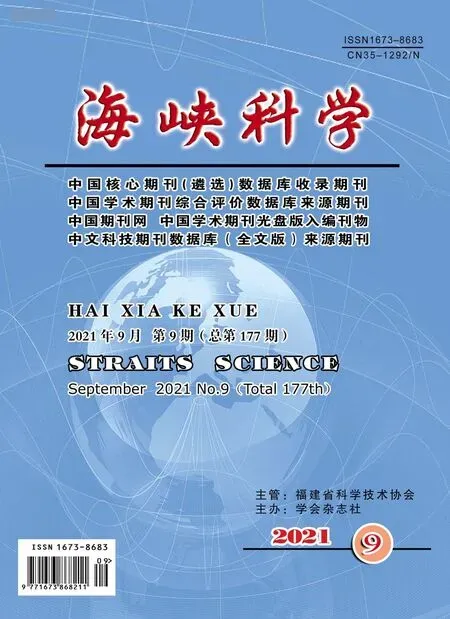P-选择素基因多态性与P-选择素蛋白关系的研究进展
福建省血液中心 罗玉丽
1 P-选择素结构及其配体
1.1 P-选择素结构
选择素是一类细胞表面跨膜糖蛋白,根据其表达部位不同,分为 E-选择素(ES)、P-选择素(PS)、L-选择素(LS)。P-选择素(total P-selectin,tPs)是一种富含半胱氨酸的整合蛋白,又称颗粒膜糖蛋白(GMP-140)、可表达于活化的血小板及内皮细胞表面,其主要功能是介导白细胞、内皮细胞、血小板等细胞间的反应,在动、静脉血栓形成以及炎症和动脉粥样硬化的病理生理过程中发挥着重要作用。它的编码基因定位于人类染色体lq21-24,含有17个外显子和16个内含子,含有789个氨基酸残基,相对分子质量为140000u[1]。与其它的黏附分子一样,P-选择素的结构共分为5个区域:N末端的一个C型植物素样区域、一个表皮生长因子区域和九个补体调节蛋白重复结构区;C末端一个跨膜区和一个胞浆短尾区(如图1)[2]。
1.2 P-选择素配体
P-选择素凝集素样区域是配体结合部位的关键序列,P-选择素的配体主要是唾液酸化的Lewisx抗原(sLex)以及高亲和力的选择素糖蛋白配体(PSGL-1或CD162),它们主要存在于白细胞的表面,也有少数存在于肿瘤细胞上,两者的结合是Ca2+依赖性的,因此P-选择素主要介导粒细胞和单核细胞在内皮细胞表面的滚动、粒细胞和单核细胞与血小板的黏附。

图1 P-选择素结构示意图
2 P-选择素基因多态性及其单倍体型
近些年来,以P-选择素基因(SELP)为背景的研究成为关注的热点,尤其是SELP的多态性以及由其所组成的单倍体型与sPs(soluble P-selectin)水平之间关系的研究。目前已有了初步的发现。
P-选择素的编码基因定位于人类 1号染色体(1q21-24)上,是一段长约50kb的DNA 序列,包含17个外显子和16个内含子。目前已知,P-选择素基因存在着13个位点的多态性,这包括了5个位于5’侧翼区和8个位于外显子的单核苷酸的变化;其可对P-选择素蛋白的氨基酸组成带来五种多态性的变化(Val168Met,Ser290Asn,Asn562Asp,Leu599Val和Thr715Pro)[3,4]。到目前为止,对 SELP 单核苷酸多态性(SNPs)与sPs相关性的研究涉及到的位点大多集中在外显子区域和启动子区域。已发现可能影响循环sPs水平的多态性变化包括了编码区的 Ser290Asn、Asn562Asp、Leu599Val、Thr715Pro和启动子区域的 C2123G、A1969G等[5-9]。到目前为止,仅有 Thr715Pro与 sPs相关的结果得到了较为一致的认识,715Pro携带者具有相对低的sPs水平。但其与发生心血管疾病危险性之间的关系并未得到一致的研究结论。值得提出的是,Thr715Pro多态性在不同民族中出现的频率差异较大,高加索人中715Pro出现率可达11%,南亚人为3%,而在阿拉伯人、黑人以及中国人中则比例更低甚至未检出[7,10-13]。由此可以想象,其他多态性位点在不同人群中的分布亦存在着差异性。这些研究对象组成的不同可能也是造成目前相关研究结果不一致的原因之一。
目前,除了进行单个核苷酸位点多态性相关研究外,科学家们也同样尝试从由这些 SNPs组成的单倍体型的不同来研究它们与sPs以及与发生相关疾病危险性之间的关系[14-16]。2007年,Volcik[16]等报道了高加索人中 290Asn-Asn562-599 Val-715Pro单倍体型携带者具有高的冠心病事件发生的危险。2008年,Ay11[14]等也报道了高加索人中Ser290-Asn562-715Pro单倍体携带者有着较低sPs水平,而290Asn-562Asp-Thr715单倍体携带者有着较高的sPs水平,并伴随有高的静脉血栓栓塞(VTE)发生的危险性。以上这些结果初步证实了SELP基因与sPs水平以及相关疾病或症状发生危险性之间存在着一定的关系。
3 P-选择素与P-选择素蛋白关系的研究
P-选择素预存于血小板α颗粒和内皮细胞Weibel-Palade小体中。当这些细胞受到炎症细胞因子、凝血酶、组胺等因素刺激活化后,P-选择素可迅速地表达于细胞表面(surface P-selectin,sfPs),并通过与表达于白细胞表面的配体结合而行使相应的细胞介导功能。循环中可溶性P-选择素则来源于活化的血小板和内皮细胞表面P-选择素分子的脱落或直接的分泌,其水平的升高与临床或亚临床的心血管疾病(CVD)以及静脉血栓栓塞事件之间存在的密切相关性已得到了许多临床研究的证实。对健康人群的追踪调查表明,具高sPs水平的人群未来发生心血管疾病的危险性明显增加[17-18];动物实验结果亦证实,sPs的升高可显著加强白细胞与内皮细胞的粘附作用,并进而影响CVD的早期发展进程[19-20]。
尽管目前在基因调控P-选择素表达的研究方面取得了不小进展,然而现有的研究多局限于单纯探讨SELP与循环总sPs水平的关系,而未能深入细化至其具体的调控对象。以循环sPs为研究对象的不足之处在于其组成的多源性,来自血小板、内皮细胞以及短片段mRNA直接表达的产物均对其有所贡献[21-22]。特别是在不同病理条件下,如内皮细胞功能异常、血小板损耗增加等条件下,总sPs的组成来源会有很大的变化[5]。这些因素也大大增加了以总 sPs水平变化为主要观察指标的临床研究结果解释的复杂性和不确定性。但在生理状态下,循环总sPs的主要来源则是血小板[21]。因此,在观察循环sPs变化的同时进一步研究健康人群血小板P-选择素与其对应编码基因之间的关系或许能为我们提供更详细的关于P-选择素基因多态性与P-选择素蛋白之间关系的基本信息。
4 小结
综上所述,P-选择素作为一种细胞粘附分子,具有多种功能。对于SELP结构功能和基因多态性的检测及可溶性P-选择素蛋白水平的检测,不仅有助于了解本民族人群的 SELP基因编码区错义突变的 SNPs分布特点,还有助于从不同角度阐明其与P-选择素蛋白表达之间的关系,为更好地防治心血管类疾病和群体遗传学的研究提供理论依据。
[1]Alexandre T D,Barbaux S,Escolano S,et al.Specific haplotypes of the P-selectin gene are associated with myocardial infarction[J].J Human Molecular Genetics,2002; 11(17):2015-2023.
[2]Pasquali A,Trabetti E,Romanelli MG, et al.Detection of a large deletion in the P-selectin (SELP)gene[J].Mol Cell Probes.2009 Dec4.[EPub ahead of Print]
[3]Herrmann SM, Ricard S, Nicaud V, et al. The P-selectin geneis highly polymorphic: reduced frequency of the Pro715 allele carriers in patients with myocardial infarction[J]. Hum Mol Genet. 1998 ;7:1277-1284.
[4]Bugert P, Vosberg M, Entelmann M, et al. Polymorphisms in the P-selectin(CD62P) and P-selectin glycoprotein ligand-1 (PSGL-1) genes and coronary heart disease[J]. Clin Chem Lab Med. 2004; 42: 997-1004.
[5]Panzer S, Rosales S, Gisslinger H, et al. Plasma levels of P-selectin are determined by platelet turn-over and the P-selectin Thr715Pro polymorphism[J]. Thromb Res. 2008;121:573-579.
[6]Lee DS, Larson MG, Lunetta KL, et al. Clinical and genetic correlates of soluble P-selectin in the community[J]. J Thromb Haemost. 2008 ;6:20-31.
[7]Miller MA, Kerry SM, Dong Y, etal. Association between the Thr715 Pro P-selectin gene polymorphism and soluble P-selectin levels in a multiethnic population in South London[J]. Thromb Haemost. 2004;92:1060-1065.
[8]Zee RY, Cook NR, Cheng S, et al. Polymorphism in the P-selectin and interleukin-4 genes as determinants of stroke: a population-based, prospective genetic analysis[J]. Hum Mol Genet. 2004;13:389-396.
[9]Marteau JB, Lambert D, Herbeth B, et al. P-selectin polymorphisms’influences on P-selectin serum concentrations and on their familial correlation:the STANISLAS family study[J]. J Thromb Haemost. 2008;6:920-927.
[10]Ghazouani L, Abbound N, Khlifa SB, et al. P-selectin gene polymorphisms and risk of coronary heart disease among Tunisians[J]. J Thromb Thrombolysis. 2009; 28:314-319.
[11]Wei YS, Lan Y, Huang RY, et al. Association of the single-nucleotide polymorphism and haplotype of the P-selection gene with ischemic stroke[J].J Thromb Thrombolysis. 2009; 27: 75-81.
[12]明凯华,李艳,夏尊恩, 等. 中国汉族人群 P-选择素基因多态性的研究[J]. 临床检验杂志, 2006, (24): 285-288.
[13]韦叶生,高林波,朱银华,等. 中国成都汉族与泰国人群 P-选择素基因遗传多态性的研究[J]. 四川大学学报( 医学版) ,2008, (39): 55-58.
[14]Ay C, Jungbauer LV, Kaider A. P-selectin gene haplotypes modulate soluble P-selectin concentrations and contribute to the risk of venous thromboembolism[J]. Thromb Haemost. 2008;99:899-904.
[15]Tregouet DA, Barbaux S, Escolano S, et al. Specific haplotypes of the P-selectin gene are associated with myocardial infarction[J]. Hum Mol Genet.2002 ;11:2015-2023.
[16]Volcik KA, Ballantyne CM, Coresh J, et al. Specific P-selectin and P-selectin glycoprotein ligand-1 genotypes/haplotypes are associated with risk of incident CHD and ischemic stroke: the Atherosclerosis Risk in Communities (ARIC) study[J]. Atherosclerosis. 2007;195:76-82.
[17]Ridker PM, Buring JE, Rifai N. Soluble P-selectin and the risk of future cardiovascular events[J]. Circulation. 2001;103:491-495.
[18]Chironi G, Dosquet C, Del-Pino M, et al. Relationship of circulating biomarkers of inflammation and hemostasis with preclinical atherosclerotic burden in nonsmoking hypercholesterolemic men[J]. Am J Hypertens.2006;19:1025-1031.
[19]Dole VS, Bergmeier W, Mitchell HA, et al. Activated platelets induce Weibel-Palade-body secretion and leukocyte rolling in vivo: role of P-selectin[J]. Blood. 2005; 106:2334-2339.
[20]Woollard KJ, Suhartoyo A, Harris EE,et al. Pathophysiological levels of soluble P-selectin mediate adhesion of leukocytes to the endothelium through Mac-1 activation[J]. Circ Res. 2008; 103: 1128-1138.
[21]Fijnheer R, Frijins CJ, Korteweg J, et al. The origin of P-selectin as a circulating plasma protein[J]. Throm Haemost. 1997; 77: 1081-1085.
[22]Semenov AV, Romanov YA, Loktionova OY, et al. Production of soluble P-selectin by platelets and endothelial cells[J]. Biochemistry. 1999;64:1326-1335.

